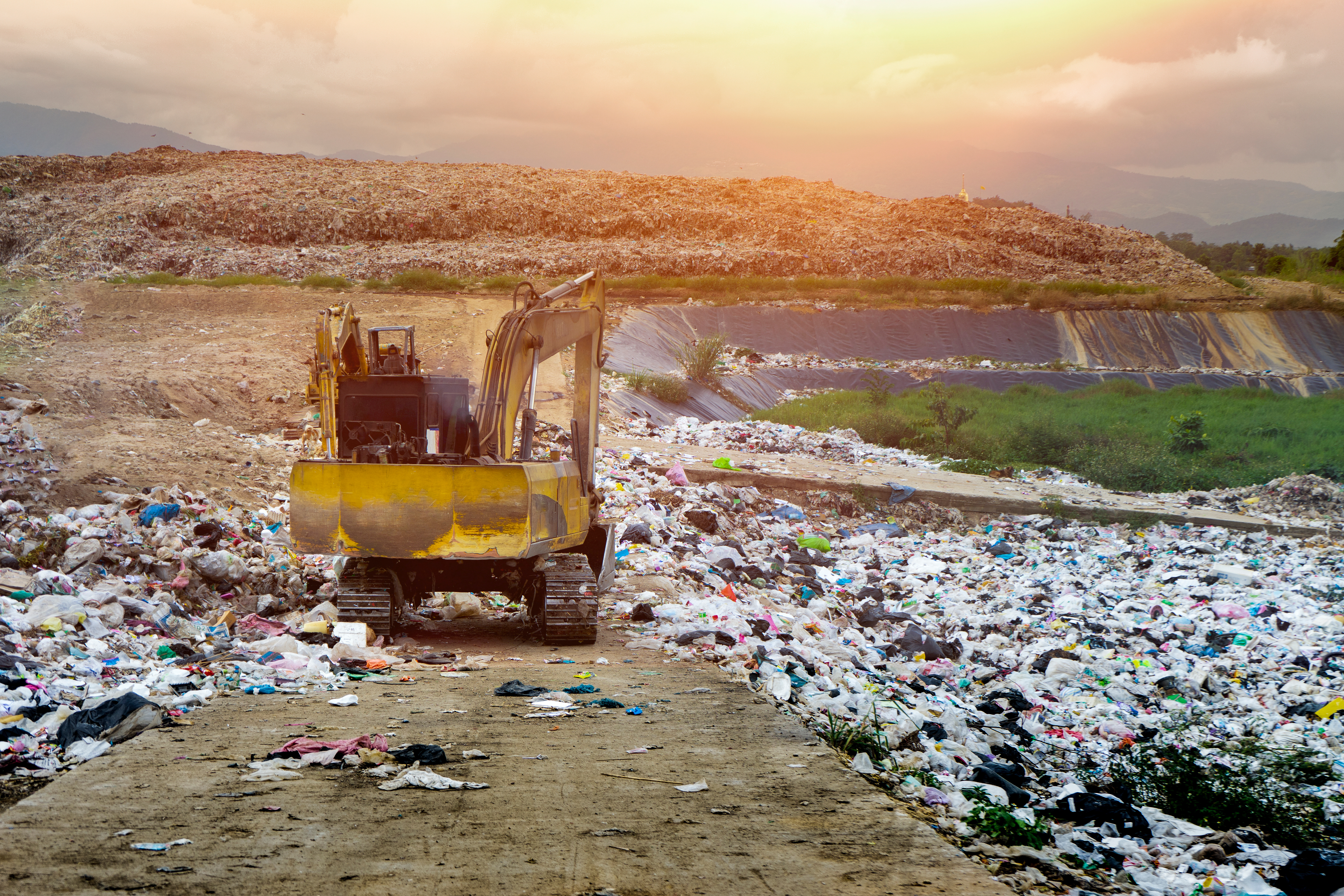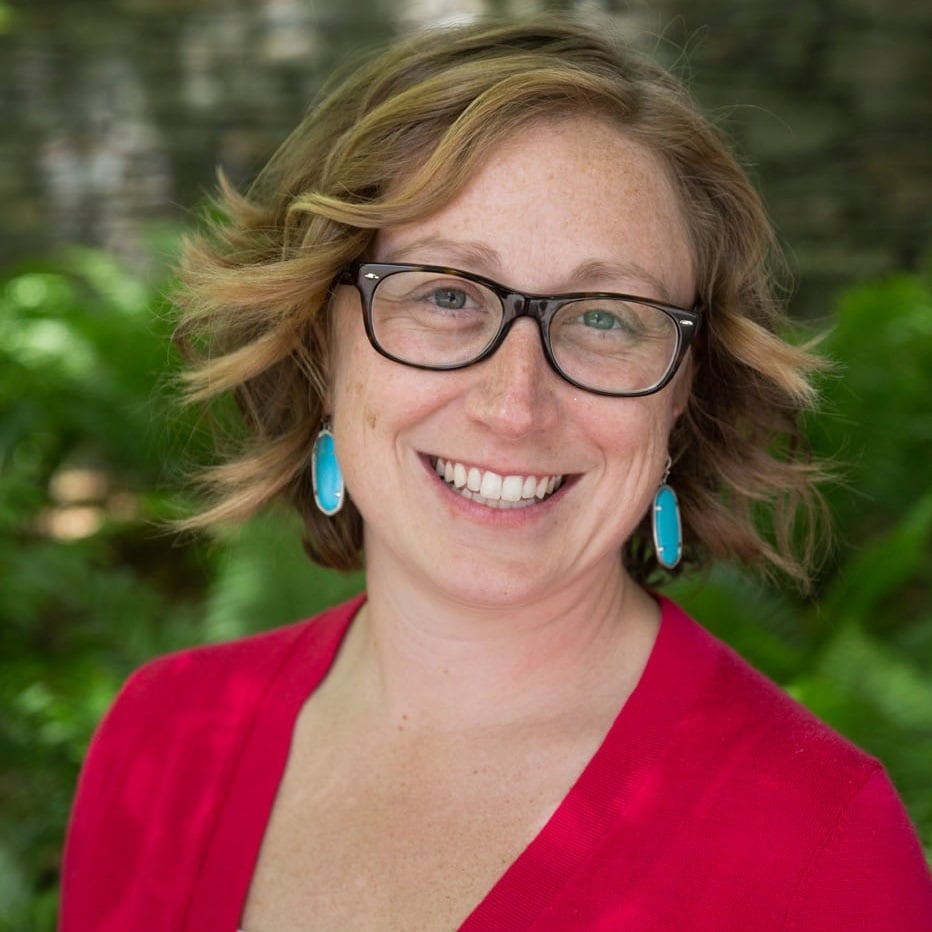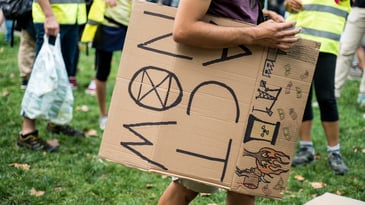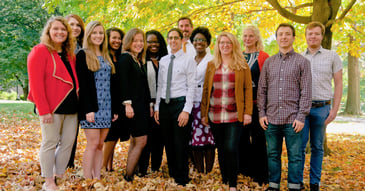Revolutionizing Waste Management to Prevent Landfill Pollution

In February 2024, The Guardian published an article titled “‘They lied’: plastics producers deceived public about recycling, report reveals.” And they didn’t bury the lede. Companies have known for more than 30 years that recycling is neither a feasible nor economical approach to plastic waste management.
It’s only recently that mainstream media has caught on.
Climate change scientists and activists have been reporting for years that the recycling status quo isn’t effective. For example, in 2019, researchers found that “only 9 percent of the world’s plastic waste was turned into new products through mechanical recycling.” As for the rest—though most of it found its way to landfills or was incinerated—a sizable portion was mismanaged, polluting marine and terrestrial ecosystems.
In the medical field, doctors must find and treat the root cause of an illness—not just the symptoms. Take that analogy and apply it to waste, and it’s apparent that businesses and policymakers tend to do the exact opposite. 88 percent of investment capital targets “downstream” recovery and recycling, whereas just 4 percent is directed to “upstream” reuse solutions, targeting waste at its source.
If we want to achieve a more sustainable, equitable future where our planet will be healthy for generations to come, we need to reframe waste so that we see it not as something to be managed but as something to avoid creating in the first place. That requires us to have a comprehensive understanding of the complexities of waste management, in addition to the dire consequences that mismanagement has on people everywhere.
Let’s (dumpster) dive in.
Defining waste management issues
The Environmental Protection Agency (EPA) defines hazardous waste as substances that possess the potential to cause harm to human health and the environment. Hazardous materials can consist of anything from the runoff from factories to the batteries in many of our devices.
Waste management issues, like large-scale dumping practices, insufficient recycling measures, and limited waste reduction strategies result in a variety of negative consequences. Hazardous waste sites and landfills, in particular, pose a substantial problem. These vast waste repositories take up valuable land, emit harmful substances into the air, and leach toxins into the surrounding soil and water.
Landfill pollution and environmental racism in the United States
According to the EPA, as of 2018, about 32 percent of trash is recycled or composted, 12 percent is burned, and 50 percent is buried in landfills.
A landfill is a site for the disposal of waste materials. These sites are designed to reduce the amount of waste that makes it into the environment, prevent disease transmission, and keep communities clean. Landfills are not a new concept; one of the earliest landfills was recorded in modern-day Greece around 3,000 BC where large holes were dug to dump refuse. We have been using variations of this idea—and then trying to mitigate their consequences—ever since.
Despite being located, designed, operated, and monitored to ensure compliance with federal regulations, they still have a significant environmental and social impact.
What is the problem with landfills?
There are quite a few.
As waste decomposes, it releases methane gas, one of the most potent greenhouse gases and a large contributor to climate change. For context, methane is 84 times more effective at absorbing the sun’s heat than carbon dioxide. However, landfills emit carbon dioxide, as well, not to mention other gases and compounds that create smog and contribute to climate change.
Federal regulations require landfills to have clay or plastic liners as an attempt to protect the soil. These liners tend to have leaks, and this landfill leachate (the liquid produced from decomposing waste) contaminates nearby soil and water, posing a significant risk to ecosystems. Leachate often contains toxins (like mercury, for example) and high levels of ammonia, which, once nitrified, can create “dead zones” where animals and plants can’t survive due to a lack of oxygen.
Landfills also take up valuable land. An average landfill is approximately 600 acres, and these are typically created through the destruction of natural habitats. There are more than 3,000 active landfills in the US.
For those who work and/or live around landfills, there are health risks, in addition to social and economic impacts to consider. Marginalized communities, particularly those made up of minority and low-income populations, are more likely to find themselves living close to landfills and hazardous waste sites. These communities have fewer resources to oppose the placement of facilities like these, which makes them an easier target. This social inequity is compounded by the fact that landfills decrease the value of the land adjacent to them, meaning that landfills help to continue the cycle of poverty for those living in these communities.
Toxic waste and race
Landfills effectively demonstrate the disturbing reality of environmental racism. But to truly grasp the urgency and magnitude of waste management challenges and how they intersect with race, we must examine a real-life example: the Warren County landfill.
The Warren County landfill is an emblematic case of environmental injustice—and one of the catalysts of the environmental justice movement. Warren County was a rural, majority Black community in northeastern North Carolina. The state had chosen this community as its dumping ground for toxic chemicals, namely polychlorinated biphenyl (PCB): highly carcinogenic chemical compounds found in industrial and consumer products. PCB production would later be banned in 1976 by the Toxic Substances Control Act.
Though state officials dismissed charges that the location of the landfill was chosen for political and racial reasons, Warren County’s population was 64 percent black (the highest percentage of any county in the state) and Shocco Township, the site of the landfill, was 75 percent black. Shocco was an unincorporated town without a mayor or a city council. However, lawsuits and public hearings failed to halt the state’s plans. The last resort was a grassroots campaign of civil disobedience against the dump.
On the first day of the protest, 55 people were arrested for blocking trucks. And the persistent opposition would go on to surprise state officials. Every day for the six weeks the state transported 7,223 truckloads of waste to the 20-acre landfill, demonstrators protested. Some days, as many as 500 people would show up.
"They didn't expect us to organize," said Henry Rooker, a white Warren County resident. "But we're gonna fight. It's one thing to be poor, it's another to be poor and poisoned."
The protests attracted media attention, in addition to several environmental and civil rights leaders. Congressman Walter Fauntroy and SCLC president Joseph Lowery helped keep the protest in the national spotlight by getting arrested themselves. Though the protests did not stop the PCB dump, the Warren County Landfill helped to highlight that most landfills are located in predominantly poor and black communities. It was also one of the first steps in founding the principles of environmental justice and the environmental justice movement itself.
Revolutionizing waste management
By embracing innovative practices and fostering a collective commitment to environmental responsibility, we can pave the way for a waste management revolution that will shape the world for future generations.
Again, most people think about (and most investments are centered around) “downstream” waste management—as in, the waste generated by products from the moment they leave the factory to the end of their life cycle. That includes recycling and all the misinformation around it. Over 90 percent of plastic products aren’t recyclable but consumers don’t know that. We must shift our focus toward “upstream” thinking, like reducing waste in the first place. According to the EPA, “reduction and reuse are the most effective ways you can save natural resources, protect the environment, and save money.”
Companies like TerraCycle are all about reduction and reuse. They are actively embracing a circular economy and trying to get waste back into the supply chain. Where many waste management companies make their profit through disposal and find solutions that keep waste out of sight and mind, TerraCycle sees possible points of value beyond the waste stream. And they also ask the question: why does waste even exist? Their goal (and a different business model entirely) is to move beyond disposable packages that are owned by the consumer to ultra-durable amazing packaging forms that are always owned by the manufacturer.
Through recycling, reusing, and resource recovery, we can support a circular economy that creates jobs, drives innovation, and fosters sustainable development. By diverting waste from landfills, we conserve valuable resources and reduce the strain on ecosystems, ensuring a more resilient future for all.
Encouraging revolution in waste disposal
While systemic change is crucial, we must also recognize the transformative role of individual actions in revolutionizing waste management practices. We can be agents of change in improved waste management by making conscious choices in our daily lives, such as reducing our consumption, embracing recycling and composting, and supporting sustainable businesses.
Individual actions go beyond personal responsibility. By inspiring and empowering others, we amplify our impact and create a ripple effect of change. By sharing knowledge, engaging in community initiatives, and advocating for sustainable policies, we can alter mindsets and reshape cultural norms, ultimately shaping a society that operates in harmony with the planet.
Start your environmental justice journey at Bard’s Graduate Programs in Sustainability
We stand at a critical juncture in our planet's history. And we must acknowledge the profound impact our actions, or lack thereof, can have on the environment and society. Waste management is not merely an abstract concept; it is a pressing issue that demands immediate action and transformative change.
With a degree from Bard’s Graduate Programs in Sustainability, you will become the change agents, the leaders, and the visionaries who will drive the transformation of waste management, not as an isolated field, but as a vital component of a sustainable and just society. Together, we can create a world where waste is reduced, resources are conserved, and all individuals, regardless of background, have equal access to a healthy and thriving environment.
To learn more about Bard and our programs, request more information. Or, explore our resource, The State of Environmental Justice.





